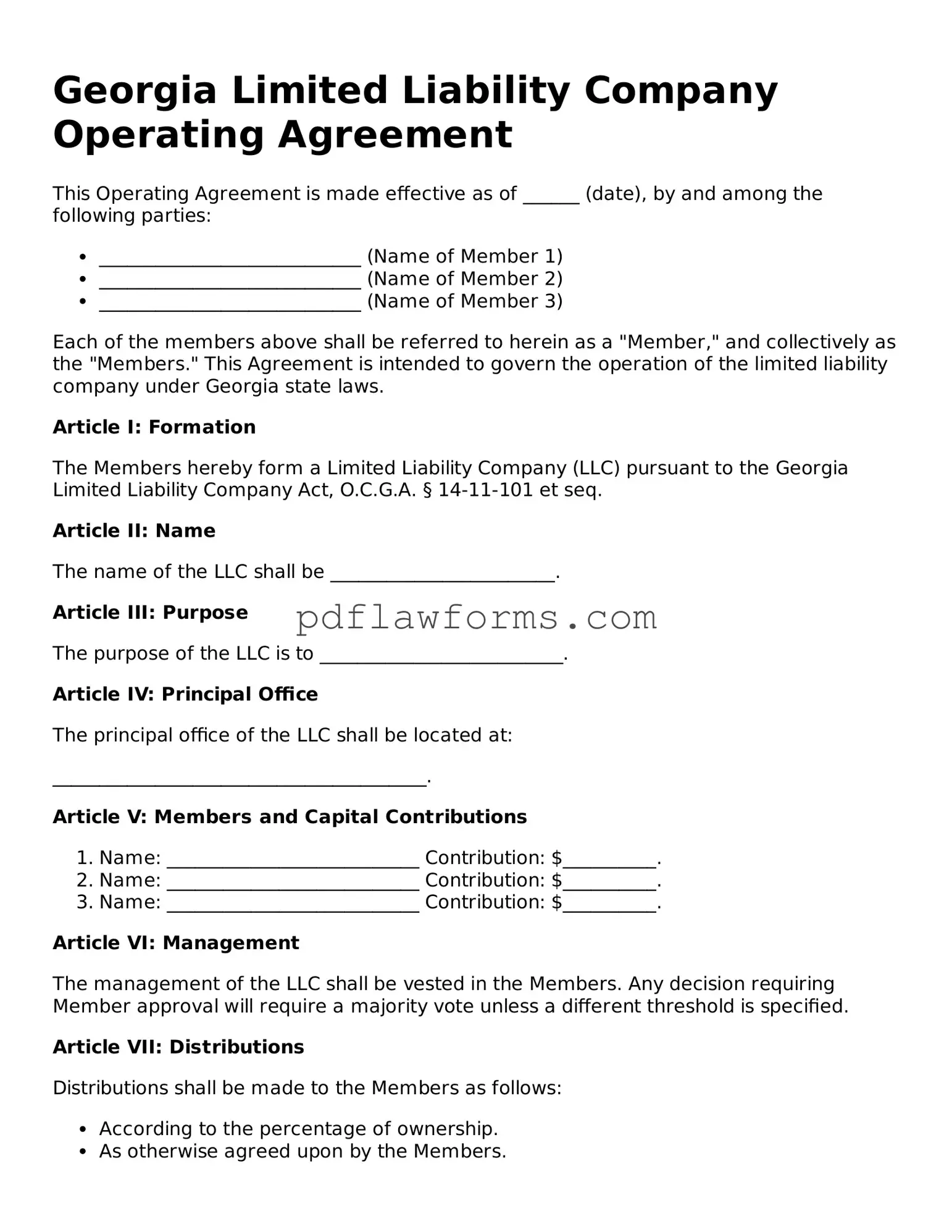Operating Agreement Form for the State of Georgia
The Georgia Operating Agreement form is a crucial document that outlines the management structure and operational guidelines for a limited liability company (LLC) in Georgia. This agreement serves to protect the interests of all members and clarify their rights and responsibilities. To ensure your LLC operates smoothly, consider filling out the form by clicking the button below.
Make My Document Online
